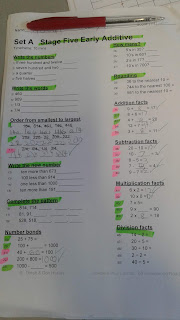Flipped Preparation - Applying the Assignment 1 Rubric
Note that this is NOT meant to be an exemplar. It has various strengths and weaknesses. It is deliberately shorter than a real assignment so it can be easily assessed.
Define your Audience
Ideo's (n.d.) Design Kit emphasises the importance of defining your audience when planning an innovation:
“Before you dig into your in-context research, it’s critical to know who you’re designing for. You’re bound to learn more once you’re in the field, but having an idea of your target audience’s needs, contexts, and history will help ensure that you start your research by asking smart questions. And don’t limit your thinking just to the people you’re designing for. You may need to consider governments, NGOs, other businesses, or competitors.”
This week will see how we might be able to understand our audience better by seeing how they might fit the innovation adoption cycle, and communicate with them better using digital leadership.
Educational Stakeholders
Student families, community member, practitioners policy makers, society at large.
Your audience for innovations in your practice will be relevant educational stakeholder. Zion (2009) outlines the general categories within which these stakeholders may fall: “When one looks at the system of education, several levels of people served by that system emerge – students, families, community members, practitioners, policy-makers, society at large. Therefore, at varying levels, for effective change within the educational system reform efforts must incorporate or build on the beliefs, values, vision, and needs of each of these stakeholders.”
The Leadership 1 assignments asks you to "develop a plan for leading the early adopters and early majority of your main stakeholders on the innovation adoption curve". So, once you have identified your stakeholder group(s) you need to also think about which members of those groups fall into which categories of innovation adopter. Note that these groups are not the same; one stakeholder group could potentially contain people of every adopter type.
Rogers’ adoption of Innovation Adoption Lifecycle
Potential adopters have been determined to have traits that affect their likelihood to adopt an innovation. Many individual personality traits have been explored for their impacts on adoption, but with little agreement. Ability and motivation, which vary between situations (unlike personality traits), have a large impact on a potential adopter's likelihood to adopt an innovation. Unsurprisingly, potential adopters who are motivated to adopt an innovation are likely to make the adjustments needed to adopt it.
Rogers (1962) outlines several strategies in order to help an innovation reach this stage, including when an innovation is adopted by a highly respected individual within a social network and creating an instinctive desire for a specific innovation. Another strategy includes injecting an innovation into a group of individuals who would readily use that technology, as well as providing positive reactions and benefits for early adopters.
Innovators, Early Adopters and Early Majority
According to Rogers (2002), whereas innovators are cosmopolites, early adopters are localites. This adopter category, more than any other, has the highest degree of opinion leadership in most systems. Potential adopters look to early adopters for advice and information about an innovation.
Robinson (2009) has summarised Rogers' ideas of the Diffusion of Innovations and he suggests that when working with early adopters one should
- Offer strong face-to-face support for a limited number of early adopters to trial the new idea.
- Study the trials carefully to discover how to make the idea more convenient, low cost and marketable.
- Reward their egos e.g. with media coverage.
- Promote them as fashion leaders (beginning with the cultish end of the media market).
- Recruit and train some as peer educators.
- Maintain relationships with regular feedback.
Robinson describes the early majority as pragmatists, comfortable with moderately progressive ideas, but won’t act without solid proof of benefits. They are followers who are influenced by mainstream fashions and wary of fads. Majorities are cost sensitive and risk averse. They are looking for simple, proven, better ways of doing what they already do. They require guaranteed off-the-shelf performance, minimum disruption, minimum commitment of time, minimum learning, and either cost neutrality or rapid payback periods and they hate complexity.
Identify your main stakeholders. Analyse which ones are relevant for this change initiative. How do you consciously identify your early adopters? Who do you need to lead (in different stakeholder groups) so that they and others will follow? Mainly focus on profiling your early adopters and early majority within the main stakeholder groups and how you’ll lead them.
Dream big - Start small. Set yourself up for success!
Digital Leadership
According to Scheninger (2014) establishing direction, influencing others, initiating sustainable change through the access to information, and establishing relationships in order to anticipate change is pivotal to school success in the future. He outlines 7 pillars of digital leadership, The first three of these are in the area of external links and visibility, and highly related to the use of digital tools,
- Communication
- Public relations
- Branding
- Student engagement / learning
- Professional growth / development
- Re-envisioning learning spaces and environments
- Opportunity
Jelly Beans In The Jar
How many jelly beans in this jar? Do not discuss your answer with anyone else until everyone has answered. Answer by adding your guess into this form:
tinyurl.com/TMLJellyBean
Next time we will reveal the results.











